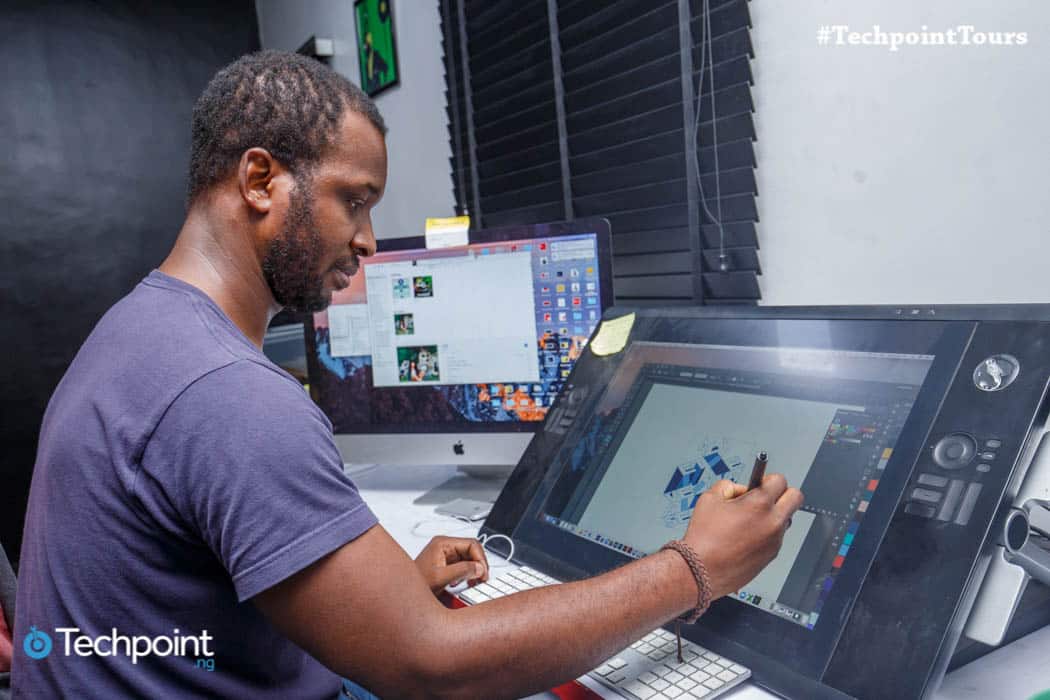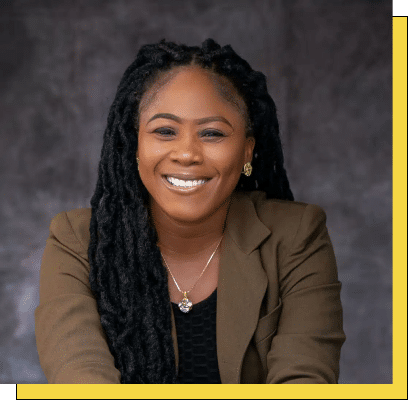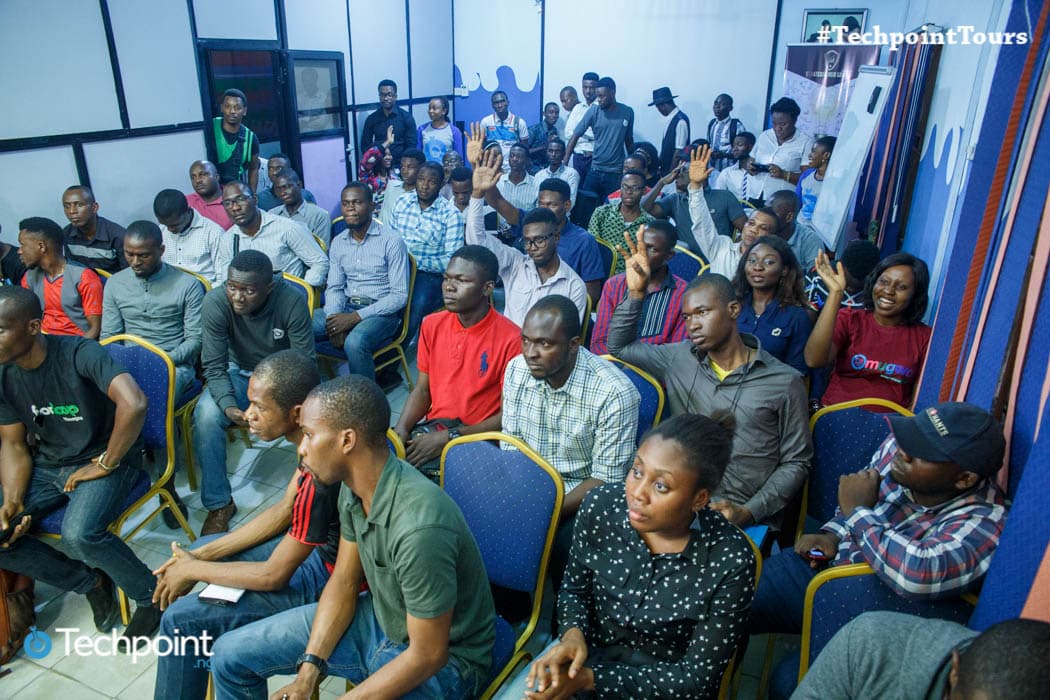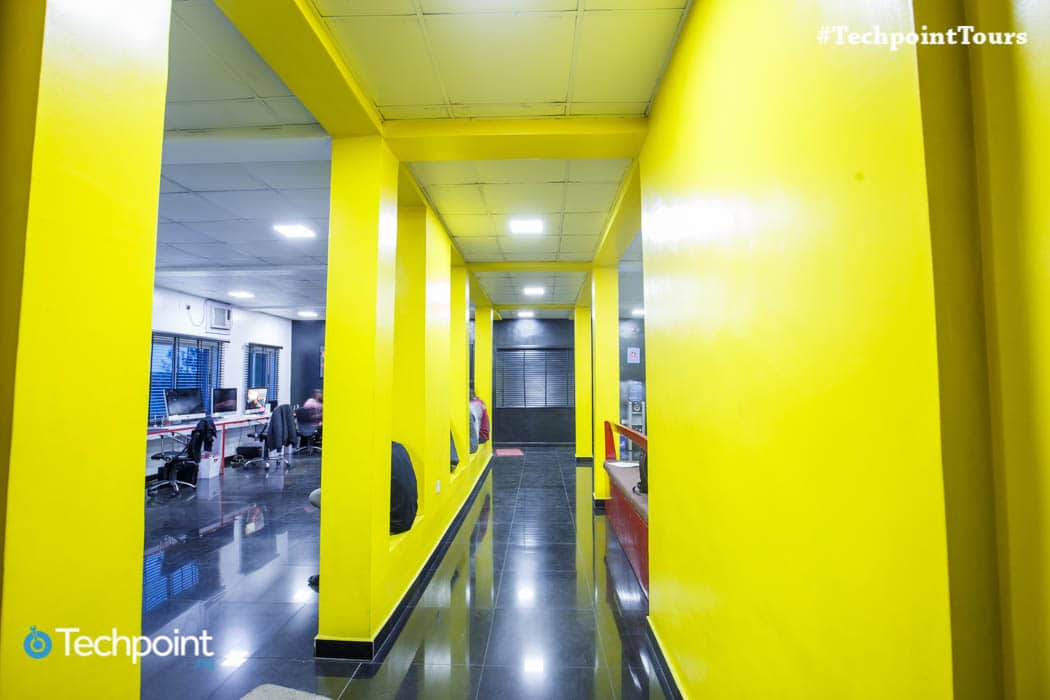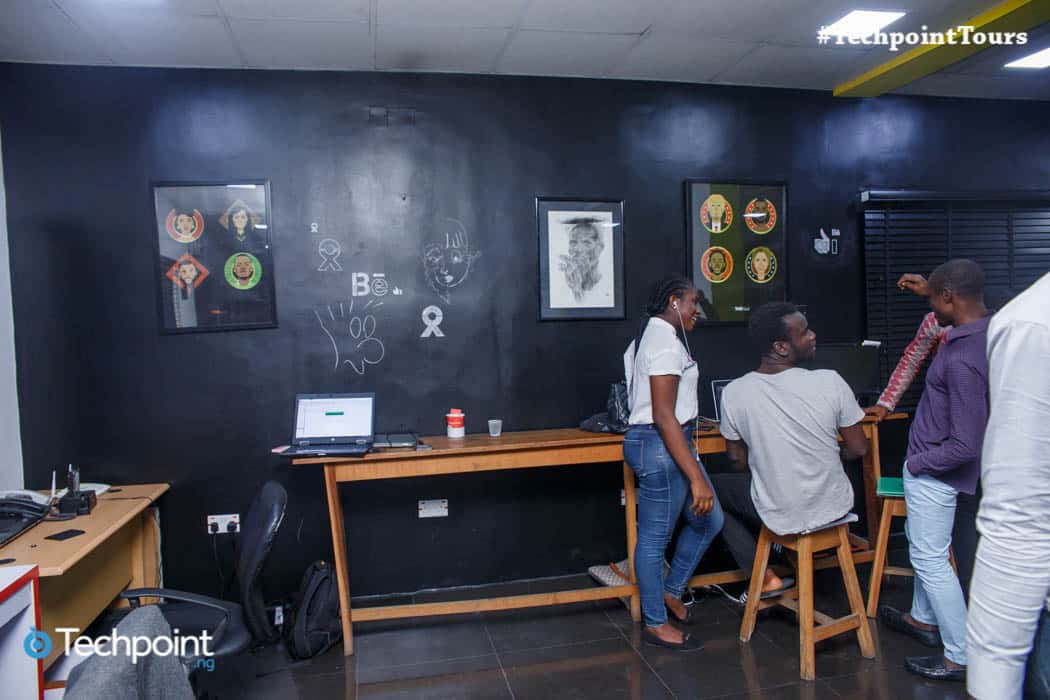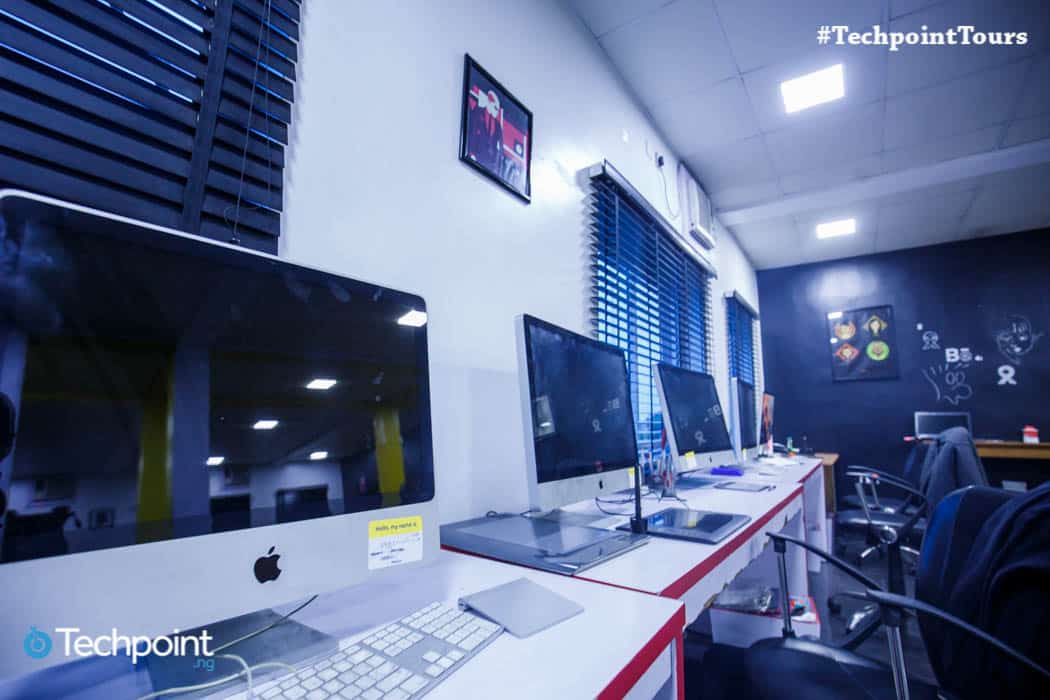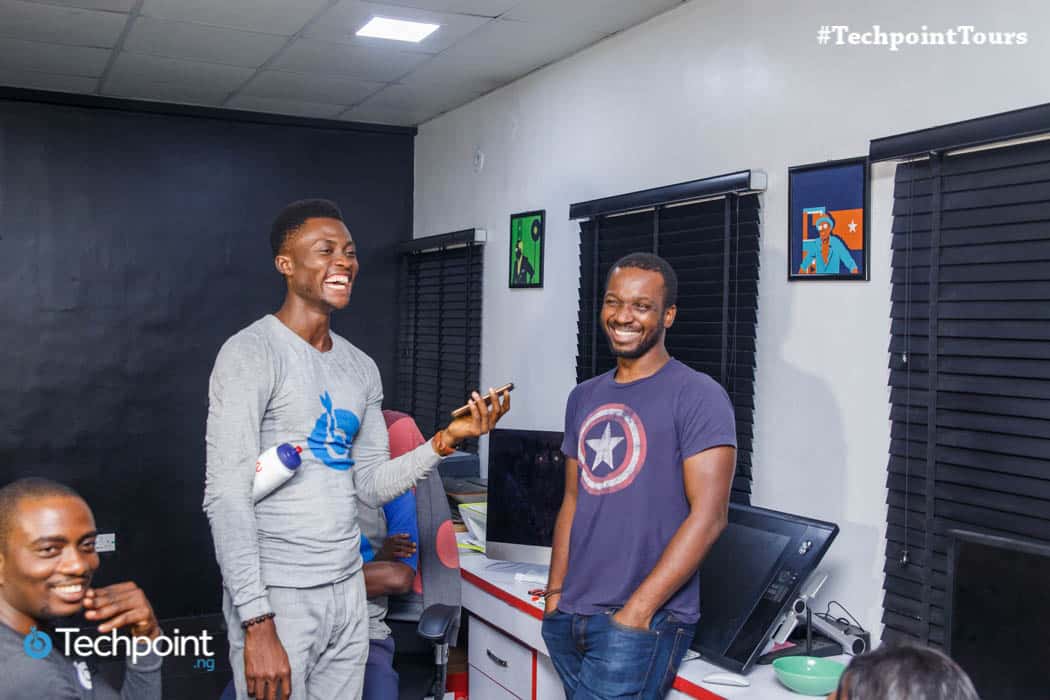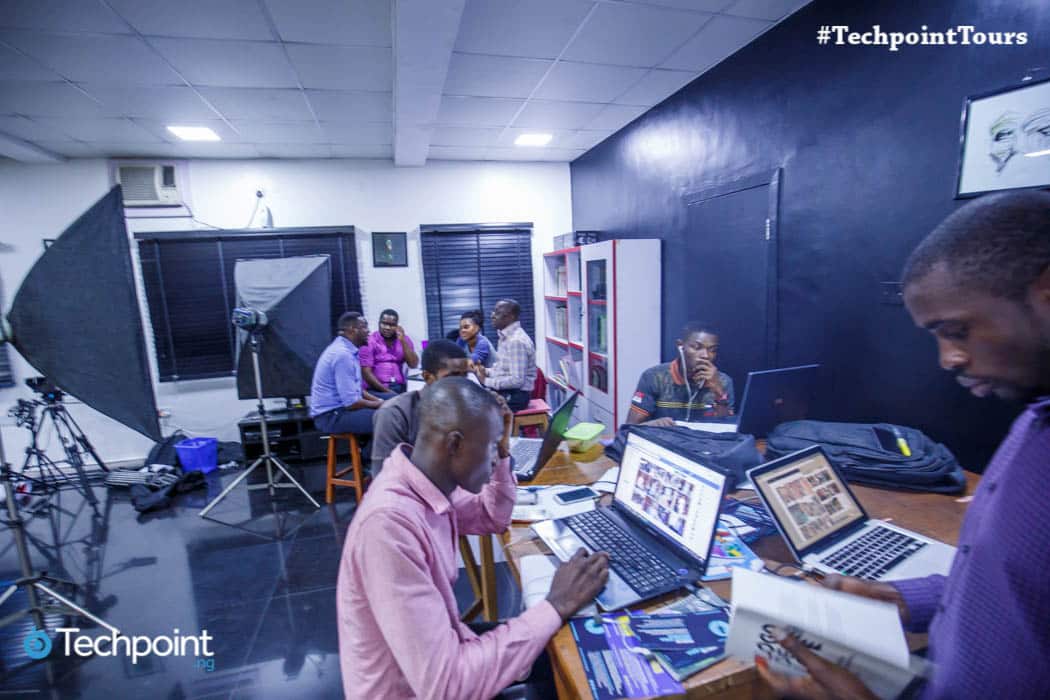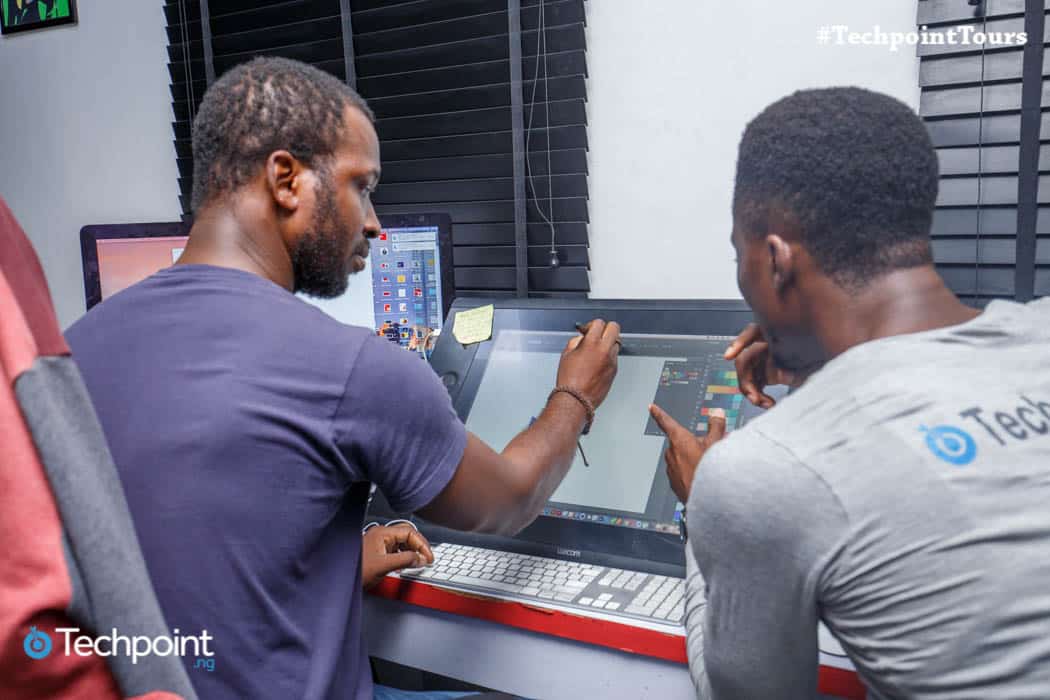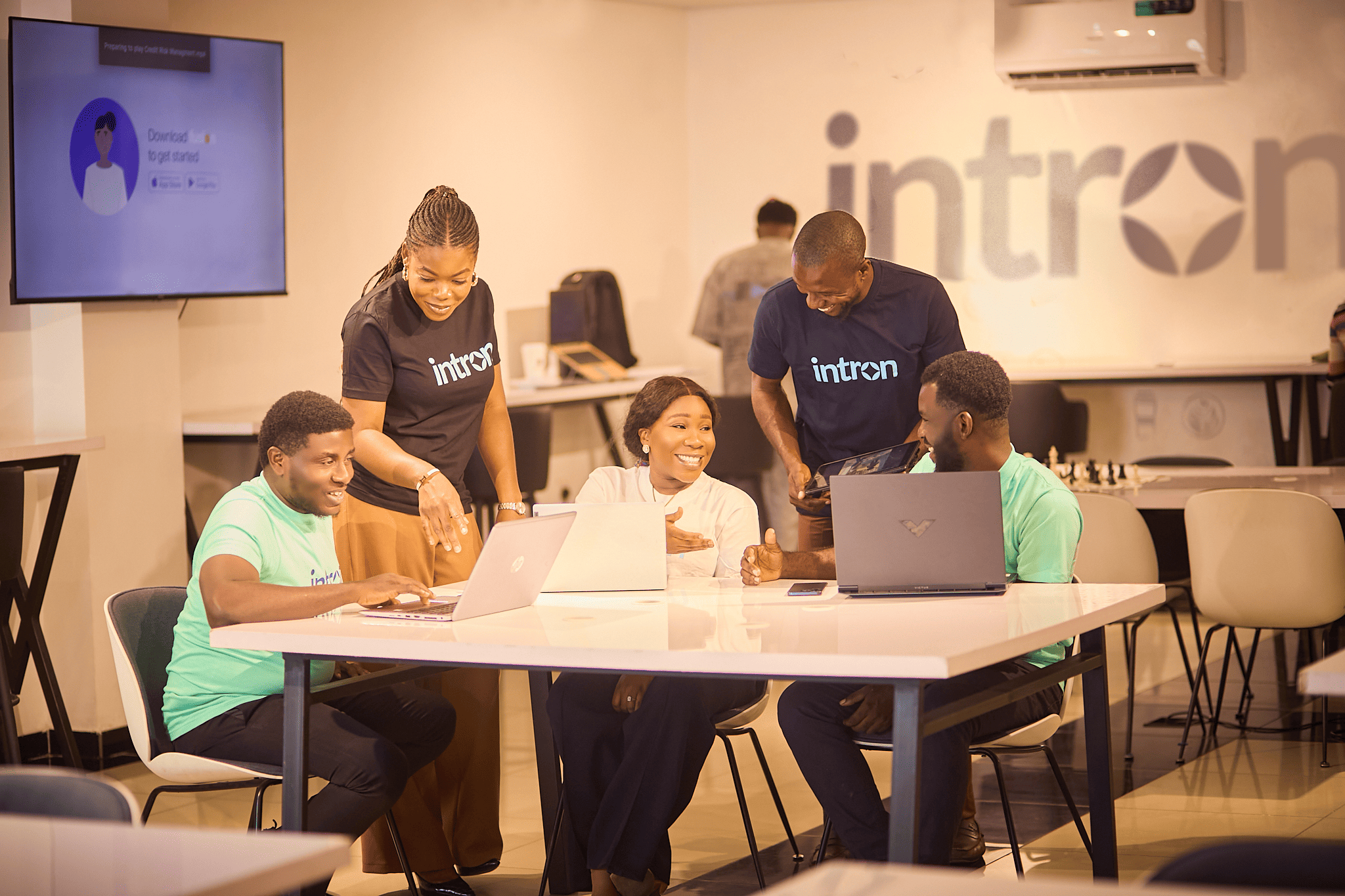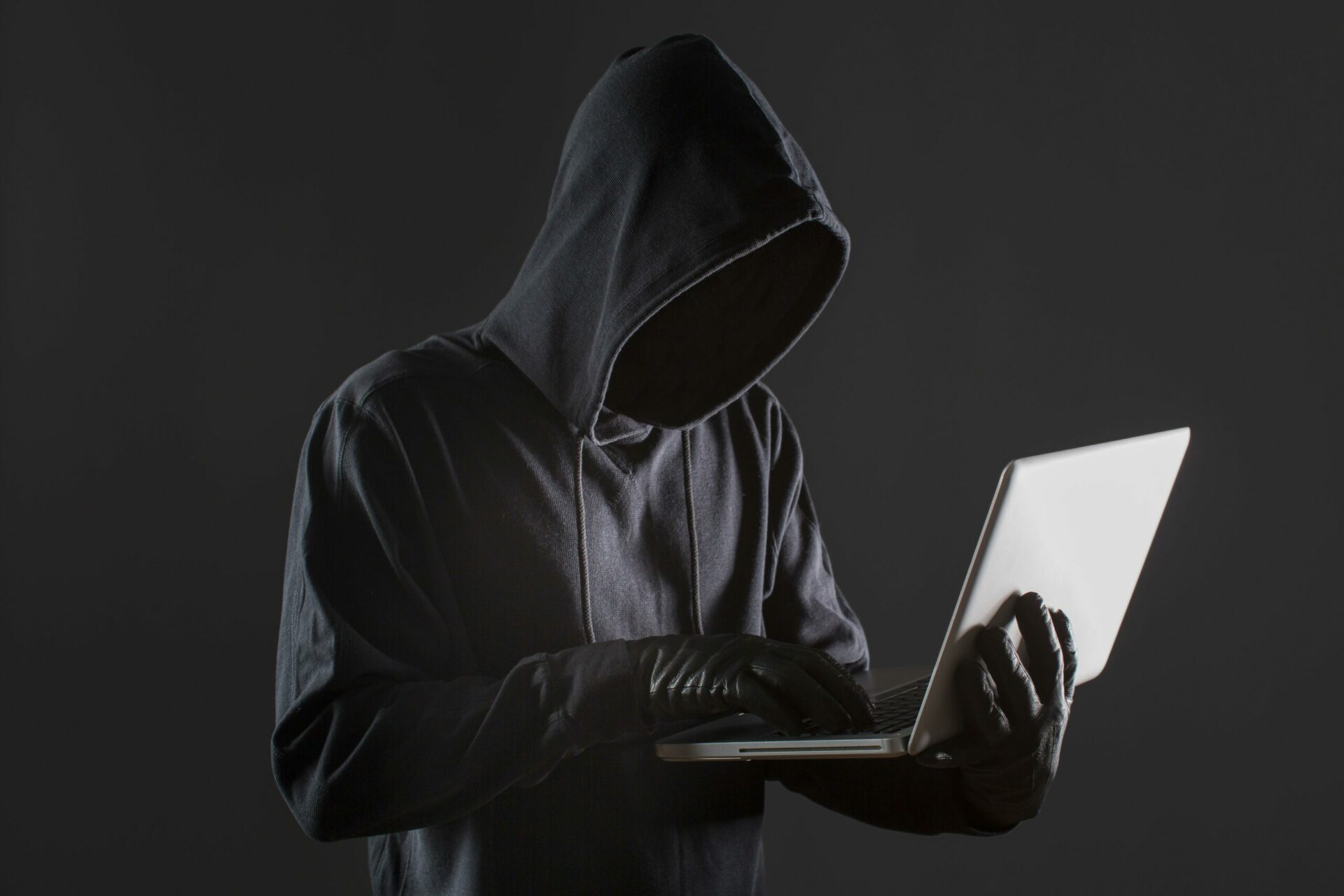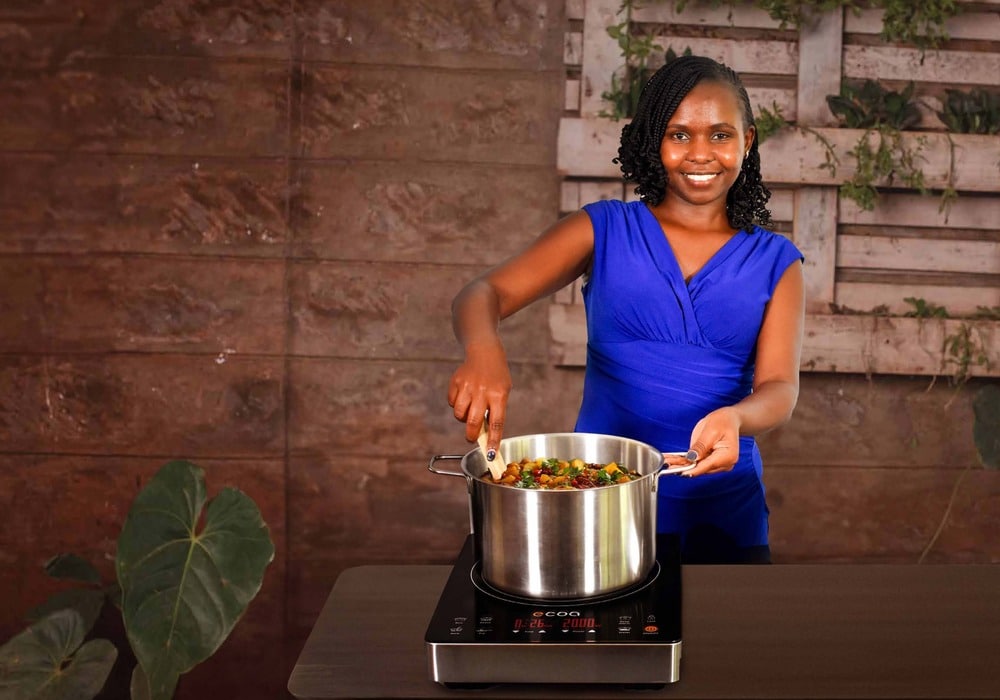Apart from its famous bole and fish dish, Port Harcourt is the city of oil and politics and every other thing revolves around these two lighthouses.
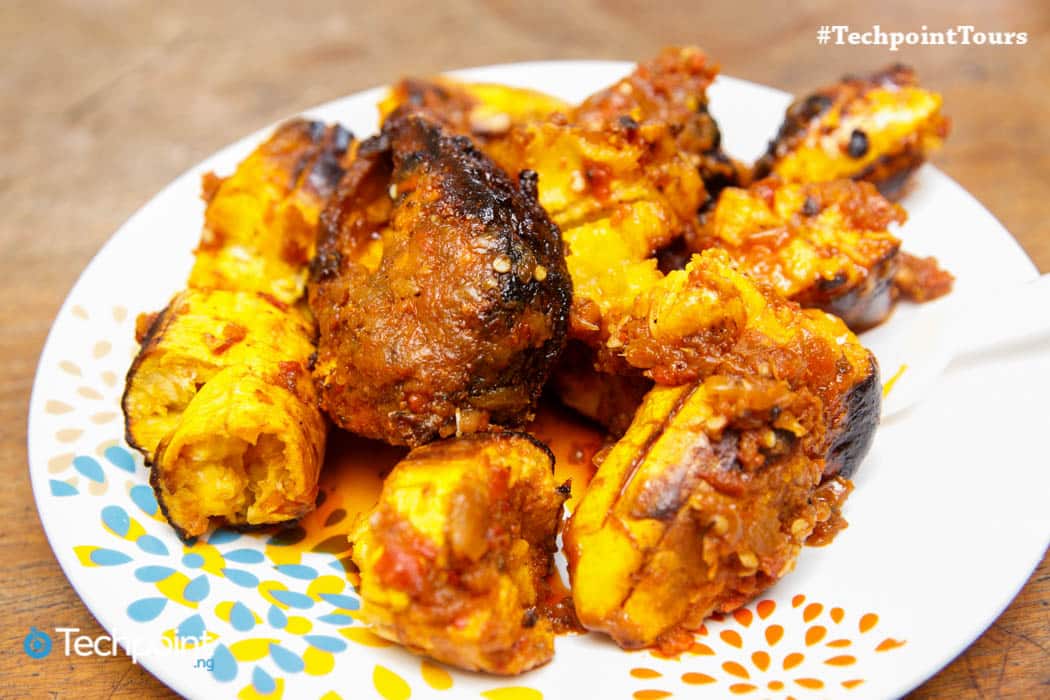
During the Techpoint Innovation Tour, I learnt from various interactions that being a creative — or anything else not related to politics and oil — in this city is hard.
Donald Okudu is an artist, 3D Animator, User Interface engineer and Identity Systems expert. He is also the convener of Tedx Port Harcourt and physical Behance meetups.
Most importantly, as the creative director of Mesh Advertising and Design Studios(MADS). Donald knows these struggles of creating in Port Harcourt.
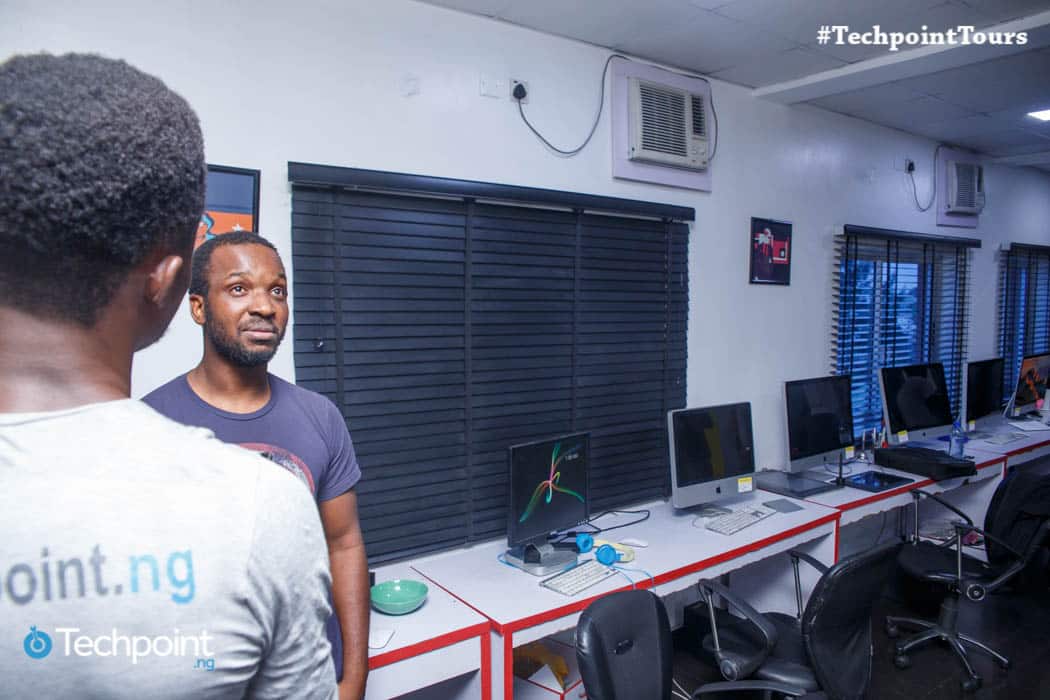
The Techpoint team met Donald when we visited the colourful MADS workspace located on the top floor of an apartment building in the heart of Port Harcourt.
In this interview Donald bares it all. From the challenges designers and creatives face in Port Harcourt and Nigeria at large, work culture to a grudge with the startup culture in Nigeria.
Victor Ekwealor (VE): Where and how did your journey into design begin?
Donald Okudu (DO): I studied Computer Science at the Rivers State University of Science and Technology(RSUST) but this degree did not have anything to do with my design journey.
Design for me was an evolutionary process. I started from drawing to web design — built with Discreet Plasma and Flash back in the days — and 3D animation.
Nowadays I am the UI (user interface) guy around here and do more of identity systems and spatial designs.
As creative director at MADS, I manage all creative and design processes.I have been in design for 15 years, but MADS is four years old.
VE: Before now I’ve never heard of MADS, what exactly happens in this workspace?
DO: Everything that’s remotely related to design; installation design, set design, editorial design, if we can imagine it, we do it. So when a client brings a job that we’ve not experienced before, we take it, look at industry leaders, learn the process and attempt it while charging less in case it doesn’t come out right, a refund won’t be hard to make.
Sometimes it can be a challenging learning curve.
But the experience sticks so that next time when that same type of job comes back, it is no longer new. We’ve learnt from previous failures, know what the missing components are and are able to translate it in the next design.
VE: You have mentioned it a couple of times since we began, what is this identity systems in its simplest form?
DO: Branding basically. It is making sure design translates effectively from one medium to another i.e logo on a paper to actual expressions and how they relate to the environment around it.
It is also the cultural component to design that evokes belief and commitment to that identity. This is very important around here [Port Harcourt] with the many challenges involved in doing what we do.
VE: What are these challenges involved with being a creative in Port Harcourt that you speak of?
DO: There are so many of them. Most are unique to Port Harcourt alone while other are a Nigerian or global problem.
Port Harcourt — and the South South in general — is an oil economy and the design market in these regions are noncompetitive so client awareness and knowledge is low. They don’t understand the value of great design and most of the ideas you’d normally sell to an established market will be rejected here.
For most of these brands, their successes are based solely on connections and not brand translation. So when you try to tell them what’s going to work, they remind you they’ve been in business for a long time and have succeeded, you cannot argue with that fact.
It is good to be in a space where you are appreciated and the people understand the work process, chances are higher you’d get paid better.
VE: In business, lack of competition is usually a good thing, why is that different around here?
DO: It usually is, but not in design. In the creative industry worldwide, competition helps sharpen your skills and shows potential clients the edge great designs gives businesses. The fear that a younger and less experienced person will steal your jobs with great designs is a disturbing prospect that will keep any serious creative awake and on their toes.
VE: Does this mean you do not have any competition in Port Harcourt and the South South region as a whole?
DO: Sometimes, you outgrow an ecosystem and everything starts feeling bland and same. At this point, you yearn for an environment where you are constantly trying to prove yourself.
In a space where there’s no need to prove yourself anymore, as a designer, that is the death of you. But whether there’s competition or not, it’s actually part of the culture to stay hungry, stay foolish.
VE: Regardless of these challenges you speak of, business is evidently good. MADS maintains an impressive space, a vast array of iMacs and pays staff. What aren’t you telling?
DO: (LAUGHING) Honestly, we are doing good but I know it could be better. We’ve put in work over the years and have been extremely lucky.
We’ve had and still have clients from Abuja, Lagos, the UK and here in Port Harcourt. MADS has worked with multinationals like Agip and Total but not without countless challenges. Most of these big companies are miseducated on the value and process of great design.
We have done a general overhaul on Total’s design systems for seven years now but before then, Total [in Nigeria] did not pay for designs, they did not know. A lot of these companies just pay for production and design comes along with it. We made them know that good design is not a complimentary package.
Subsequently, designers that came after on these projects got paid.
We have surprisingly managed to stay away from government jobs — because they never pay on time if they do at all — and startups.
VE: What is your beef with startups?
DO: I don’t work with startups a lot primarily because most can’t afford our services. But generally, I have a big issue with startups in Nigeria, apart from having an “idea”, a lot of them are clueless. Most are set up like they are being positioned for funding without any real thoughts to value proposition. Sometimes I feel like the ‘startup’ buzzword takes away all the commitment.
I don’t consider MADS a startup, we are a creative business that calculates profit, loss and evaluates opportunities.
VE: I have noticed an open work space here and this is generally believed to be counterproductive for a creative environment, how does that work?
DO: At MADS an open workspace is a cultural thing and it is working. It’s the way we know and it has helped foster collaboration.
In a collaborative creative space, constant supervision is key but it generally is important as a creative to be able to work anywhere because you do not always get to choose your workspaces.
Before I got an office, I worked from Kilimanjaro restaurant in Port Harcourt for one year and the first CarniRiv(Rivers State Carnival) design came out of that ‘workspace’. And I went on to handle all the designs and branding for a few years until the festival was discontinued.
VE: How did you become the convener of TedX Port Harcourt and the Behance Meetups?
DO: They are all mediums for giving back. For Tedx, I was inspired by Sir Ken Robinson’s talk on creativity that resonated deeply at that point in my life. I spoke to a friend who showed me how to get on the platform and get a license. The first year’s theme was “Creativity and Beyond”.
Naturally from a design perspective you want to have a conference that talks about design. With time, I discovered more ways design can positively influence life and society as we know it beyond its general perception as “logo, graphics and fliers”
The question became how to create conversations on design that actually addresses local issues and proffers indigenous solutions to these problems.
The second year,the conversation changed and became more culturally aware.
At the time, a location specific search for Port Harcourt on Behance, DeviantArt and Art Station returned only two names. It didn’t make sense because there were a lot of these artists on Facebook showing their art but apparently they couldn’t articulate and document their processes properly. That was how the Behance meetups began.
We’ve had two Behance meetups this year where everyone came with their online and physical portfolios and we brainstormed on becoming better artists. At the first meetup, a lot of the designers did not even have portfolios and the ones that had weren’t professional. It was a cultural problem.
By the second one, people had started adjusting, creating stories and bettering their craft.
VE: Any final words to designers and creatives in general?
DO: Quarterly, I pick a new style of my art and experiment with it. Don’t remain in your comfort zone, stretch yourself and see your elastic limit. Even in your designs, shy away from copy and paste because they dull your art in the long run. Once in awhile it is okay to use existing templates to achieve fast results, but let your portfolio contain original art with depth.
Lastly, learn how to articulate and document your process; make blog posts and videos every step of the way.

